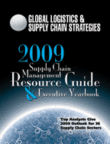
Visit Our Sponsors |
|
|
|
|
|
|
|
|
|
|
|
|
|
|
|
|
|
|
|
|
|
|
|
|
|
|
|
|
|
|
|
|
|
|
|
|
|
|

Optimizing transportation management in any organization is getting more difficult with the seemingly daily change in the price of oil. Only a few months ago the price per barrel was skyrocketing out of control; only to see it settle below the lowest levels of the previous 24 months. Does that mean the oil crisis is over and we can go back to operating as we have in the past? Not likely and many economists view this as a calm before the inevitable rise in the price of oil to a level where it will stay for a very long time. The manual processes that once thrived in the stagnant pace of change in transportation costs are no longer adequate to keep up with today's decision-making requirements. Even though solutions have added functionality and deployment options to suit a wide range of business categories, only 39 percent of companies surveyed are using any type of transportation management solution. In addition, over 40 percent of respondents are achieving less than 90 percent on-time delivery performance.
With fuel and transportation cost uncertainty becoming a part of everyday life, an increasing number of people are beginning to realize the impact on a wide range of daily activities beyond their commute to work. From additional charges with each taxi hailed or each airline ticket booked, to the rising cost of avocados from Mexico and two-day delivery of that new novel, the rising cost of transportation has affected everyone that depends on the global supply chain. Today's transportation managers are working in parallel to drive down one of the most fundamental costs of doing business while, at the same time, diligently strategizing for tomorrow.
In fact, the instability in the cost of fuel and other charges isn't the sole focus of today's managers, but the awareness that has arisen due to the cost of transportation and the demands from other groups within the organization to have visibility to this information is putting a new level of pressure on today's transportation managers. In the past, the transportation department operated to ensure that raw materials got in and finished product out, all in an effort to support the needs of the supply chain. However, as the costs have risen, more focus has been placed on the cost of transportation and the effort now is to make sure the supply chain still moves at light speed to deliver customer value, but without the increased costs.
Today's transportation management system is capable of not only providing a source of consistency and automation to transportation planning and execution but can provide incredible insight to ways to improve transportation processes and reduce costs. From automating the sourcing and procurement of transportation capacity, to the effective planning, executing, and monitoring of the most cost-effective options, today's TMS is becoming and should be an integral part of the overall supply chain strategy, just not for managing transportation.
The Outlook
Not only is it important to work more closely with shipping partners, it can lead to a larger competitive advantage. Most companies cannot compete on a volume level to gain advantage with carriers, but by working more closely with carriers and being more flexible with forwarders, they will open themselves to opportunities to take advantage of capacity or route openings. Currently, over 40 percent of Best-in-Class companies can tender electronically with carriers, receive electronic messages from carriers, and provide outbound carrier schedules to the warehouse. Having better communication and integration can provide opportunities on a frequent basis to get shipments around the world; it takes being creative and being more open in working with key partners.
RELATED CONTENT
RELATED VIDEOS
Timely, incisive articles delivered directly to your inbox.

